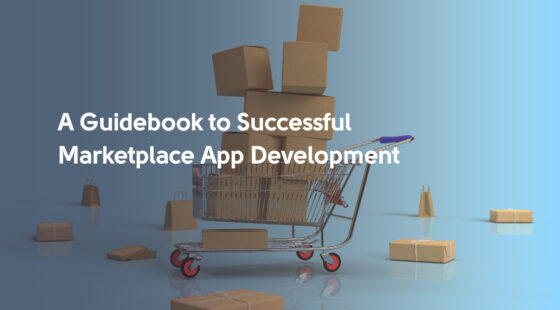The retail industry faces a growing challenge: a persistent labor shortage that threatens operational efficiency and customer satisfaction. Retail businesses need help attracting and retaining employees, leading to understaffing issues and a significant drop in service quality.
As businesses do their best to navigate these tricky waters, optimizing workforce management is more important than ever.
According to the U.S. Bureau of Labor Statistics, the retail sector saw a turnover rate of 60.5% in 2023, significantly higher than the overall private sector average. Effective workforce management can help retailers reduce costs, increase productivity, and ensure a positive customer experience. But how?
In this article, we aim to equip you with actionable tips and insights to help optimize your workforce through technology, innovative strategies, and best practices for retail workforce management solutions.
Let’s get the retail engine going!
Why Does the Labor Shortage Happen?
The labor shortage in the retail industry has become increasingly pronounced over recent years, posing significant challenges for businesses. According to a recent survey, 4 out of 5 employers have a hard time finding skilled talent. To add fire to the flame, 38% of employees say they’re likely to quit in the next year.
Several factors contribute to this trend:
- Low unemployment rates: With low unemployment, fewer individuals are seeking retail positions, which leads to increased competition for talent. Retailers are finding it harder to attract new hires because of the limited pool of potential candidates available.
- Shifting workforce expectations: Many workers are shifting away from retail roles due to perceived job instability, demanding hours, or a lack of career advancement opportunities. Employees are increasingly seeking flexible work arrangements, better wages, and a clearer path for career growth—factors that traditional retail roles have not always been able to deliver.
- Post-pandemic market: The COVID-19 pandemic significantly reshaped the labor market. Many former retail workers have transitioned to other industries with remote or more flexible opportunities. The pandemic accelerated changes in work culture, prompting employees to prioritize work-life balance and find roles that offer more stability and flexibility.
The labor shortage has a profound impact on operational efficiency and customer service. Retailers struggle with understaffing, leading to longer customer wait times, reduced service quality, and increased employee burnout. These challenges negatively affect sales and customer satisfaction, making it crucial for retailers to implement effective workforce management practices. Effective retail workforce management becomes vital to overcoming these challenges, focusing on streamlining operations, improving employee engagement, and maximizing productivity.
Strategies for Optimizing Workforce Management
To tackle the labor shortage and enhance workforce efficiency, retailers must implement effective workforce optimization strategies that maximize productivity, improve employee satisfaction, and align staffing needs with business goals. For instance, did you know that only 12% of hiring professionals use artificial intelligence in recruiting or talent management processes?
Here are some strategies that can help retailers overcome workforce challenges and build a productive, motivated team:
1. Workforce Planning and Forecasting
Effective workforce planning and forecasting allow businesses to predict labor demand and allocate resources efficiently. Retailers can analyze sales trends, seasonal fluctuations, and consumer behavior to anticipate staffing needs more accurately. The Zendesk Customer Experience Trends Report 2024 reveals that 69% of CX leaders agree that it is a significant challenge to glean accurate future labor forecasting.
By using workforce optimization software and predictive models, retail leaders can ensure they have the right number of employees scheduled at peak times, minimizing both under- and overstaffing. Accurate workforce planning helps to prevent issues such as employee burnout due to overwork or decreased customer satisfaction caused by long wait times.
Advanced analytics and AI-powered forecasting tools can provide deeper insights into customer behavior, allowing retailers to adjust staffing levels dynamically based on real-time data. By leveraging these tools, businesses can better manage their labor resources, ultimately reducing costs and improving the overall efficiency of their workforce.
Key Strategies for Workforce Optimization:
- Right size: Organizations must maintain an optimal workforce size that is neither overstaffed nor understaffed. This balance helps them meet operational demands efficiently and manage costs effectively.
- Right shape: Aligning the workforce's skills, knowledge, and experience with current and anticipated business needs ensures that employees are well-equipped to handle their roles as market conditions evolve.
- Right cost: Employers must manage employee compensation intelligently to control costs while ensuring they attract and retain top talent.
- Right agility: Maintaining competitiveness requires a flexible workforce that can quickly adapt to changing market trends, technological advancements, and organizational needs.
2. Upskilling and Retraining the Existing Workforce
Upskilling and retraining are crucial to boosting workforce productivity while reducing the dependency on new hires. With only 40% of employees stating that their companies are actively upskilling them, investing in training programs becomes imperative for employees to expand their skill sets, which allows them to take on more varied responsibilities.
Upskilling allows workers to perform multiple roles, making the workforce more adaptable to changing business needs. By offering continuous learning opportunities, businesses can increase employee satisfaction and retention.
Automation can complement upskilling efforts – routine tasks can be handled by technology, while employees focus on customer service and value-added activities. For example, implementing automation in inventory management or administrative duties frees employees to engage with customers, enhancing their shopping experience. Providing development opportunities also makes employees feel valued, increasing retention rates and job satisfaction.
3. Innovative Recruitment and Retention Strategies
To optimize staffing, retailers must adopt innovative recruitment and retention strategies. Using retail workforce management software with AI capabilities can help automate recruitment, analyze candidate fit, and streamline the onboarding process. Automated recruitment platforms can filter applications, identify suitable candidates, and reduce time-to-hire, ensuring that businesses do not lose potential talent due to lengthy hiring processes.
Additionally, offering competitive benefits, flexible work schedules, and clear paths for career growth can significantly improve retention. Employees are more likely to remain with a company that meets their work-life balance expectations and provides advancement opportunities. Companies can also consider offering referral bonuses and leveraging social media platforms to attract potential candidates. A positive work culture emphasizing employee well-being and growth will ultimately contribute to a more engaged and committed workforce.
4. Performance Management
Performance management plays a critical role in workforce optimization. Setting clear performance goals and providing continuous feedback encourages employees to meet their potential. With ⅓ of U.S. companies abandoning the traditional appraisal process, it’s crucial to employ a strong performance management system that allows businesses to recognize high performers, identify areas for improvement, and ensure alignment with business goals.
While 98% of firms feel performance management is vital, just 64% believe they have an effective strategy. Integrating a workforce optimization model allows managers to track performance, identify gaps, and provide relevant training or incentives, directly contributing to overall productivity.
Regular check-ins and performance appraisals foster open communication between managers and employees. This helps set realistic goals, provide support where needed, and recognize employees' contributions. Rewarding outstanding performance with bonuses or incentives can also motivate employees and boost overall morale, creating a positive and productive work environment.
5. Leveraging Technology for Retail Workforce Management
Fun fact: The AI in retail market size was USD 9.97 billion in 2023, accounts for USD 11.83 billion as of 2024, and is expected to reach around USD 54.92 billion by 2033,
Technology is pivotal in optimizing retail workforce management. Leveraging modern solutions can help drive efficiency, streamline processes, and improve employee satisfaction. With over 87% of retailers already implementing AI and other smart technologies into their pipelines, here are some key solutions that can drive workforce efficiency:
AI-Based Scheduling and Forecasting Tools
AI-based scheduling tools help create optimized shift schedules based on factors like sales data, employee preferences, and foot traffic predictions. These tools ensure that retailers have the right number of staff at the right time, reducing labor costs while ensuring customer needs are met. Over 60% of retailers are planning to increase their AI investments. Using AI-powered tools, businesses can create schedules that balance operational efficiency with employee preferences, ultimately improving efficiency and employee satisfaction.
AI can also identify patterns in sales and customer behavior that may not be immediately apparent to human managers. By leveraging AI, businesses can make data-driven decisions to optimize staffing levels, ensuring they are neither overstaffed nor understaffed during peak times.
Mobile Workforce Management Applications
Mobile workforce management applications provide employees with access to schedules, leave requests, and communication tools. This empowers employees with greater control over their work schedules and reduces the administrative burden on managers. It makes sense when you consider that the global workforce management market size was valued at USD 8.07 billion in 2022 and is anticipated to grow at a CAGR of 11.7% by 2030.
Mobile apps also enable employees to request shift changes, communicate with colleagues, and receive essential updates—all from their devices. This level of flexibility enhances the employee experience, making it easier for staff to manage work-life balance.
Employee Self-Service Portals and Chatbots
Employee self-service portals and chatbots improve communication and engagement by allowing workers to access HR information, submit requests, and receive automated responses. In short, this technology is poised to reduce the load on HR teams and help workers resolve issues more quickly.
Chatbots can answer frequently asked questions, guide employees through common HR processes, and provide instant responses—minimizing the need for manual HR intervention and speeding up response times. For instance, chatbots can answer up to 79% of routine questions.
Integration of IoT for Task Automation and Tracking
The Internet of Things (IoT) plays a significant role in task automation and tracking inventory levels, enabling retail workers to focus on customer interactions instead of manual inventory checks. IoT devices can track product movement, monitor stock levels, and send alerts when restocking is required. By automating inventory-related tasks, IoT ensures that shelves are always stocked, reducing the risk of lost sales and enhancing the customer experience.
Robotic Process Automation (RPA) for Back-End Operations
Robotic Process Automation (RPA) can handle repetitive, back-end tasks like payroll processing, data entry, and inventory updates. By automating these tasks, RPA ensures accuracy while freeing employees to focus on customer-facing activities. Automating administrative tasks also minimizes the risk of human error, improves accuracy, and enhances the overall efficiency of back-end operations.
Additionally, customers find the ease and speed of RPA-delivered services significantly more engaging, driving customer satisfaction and directly impacting revenue. A PWC study found that customers are 16% more prone to spend more money and time in exchange for great customer experiences.
Challenges in Retail Workforce Management
Retail workforce management faces numerous challenges that can hinder the efficiency and effectiveness of staffing operations. These challenges are particularly pronounced in an industry marked by high turnover rates, evolving consumer expectations, and the impact of technology.
High Turnover Rates
The retail sector is characterized by a high turnover rate, with the quit rate reaching 4.3% as of February 2024, which is significantly above the national average of 3.5% in all other sectors. This high turnover presents challenges in maintaining a stable and experienced workforce, ultimately affecting customer service and operational efficiency. New hires require time to acclimate, leading to productivity gaps that can last for months. Additionally, the loss of experienced employees can burden the remaining staff, increasing their workload and potentially leading to further turnover.
Recruitment and Retention
Attracting and retaining talent has become increasingly difficult in the retail industry. A recent survey indicated that nearly 63% of frontline retail managers contemplate leaving their positions, citing dissatisfaction with working conditions as a primary reason. Moreover, the competition for skilled workers has intensified, exacerbated by a surplus of job openings juxtaposed against a lack of qualified candidates; there are currently 5.5 million retail job vacancies in the United States. To counter these challenges, retailers must implement effective recruitment strategies and enhance employee engagement to reduce turnover.
Adaptation to Technological Changes
As technological advancements reshape the retail landscape, workforce management must adapt accordingly. Retailers are increasingly utilizing workforce management platforms to automate scheduling, demand forecasting, and analytics, which can optimize staffing levels and improve operational efficiency. However, the rapid pace of these changes poses challenges for training and adapting existing staff to new systems, potentially causing resistance and further complicating workforce management efforts.
Navigating Labor Laws and Regulations
Retail managers must also navigate a complex web of labor laws and regulations, including the Fair Labor Standards Act and the Americans with Disabilities Act. Compliance with these laws is essential, but it can be time-consuming and challenging, particularly for businesses with diverse employee demographics. Ensuring adherence to these regulations while effectively managing a diverse workforce adds another layer of complexity to retail workforce management.
Employee Burnout and Job Satisfaction
Employee burnout has reached alarming levels, with almost 82% of employees recently reporting experiencing burnout. High levels of stress and dissatisfaction can lead to decreased productivity and increased turnover, compounding the challenges faced by retail managers. Creating a supportive work environment that addresses these issues is essential for improving job satisfaction and retaining talent.
How to Overcome Retail Workforce Management Implementation Challenges
While the benefits of technology-driven workforce management are clear, implementing these solutions presents several challenges. Retailers must overcome barriers to employee resistance, change management, and data security to adopt these technologies successfully. Overcoming these barriers requires effective change management, a focus on employee engagement, and careful attention to data security.
Addressing Concerns and Resistance to Technology Adoption
Employees may resist new technologies out of fear of job loss or unfamiliarity. Retailers should provide comprehensive training and emphasize how technology will simplify work rather than replace jobs. Demonstrating how technology can enhance job roles, rather than eliminating them, helps mitigate fears. Creating a culture of innovation is essential to gaining employee buy-in. Businesses can build trust and alleviate concerns by involving employees in the implementation process and seeking feedback.
Change Management Strategies for Implementing New Technologies
Successful technology adoption requires clear change management strategies. Retailers should communicate openly with employees, provide necessary training, and involve team members in the implementation process. Change management ensures that employees are comfortable with new processes and that technologies are adopted successfully. Retailers should consider using pilot programs to introduce new technologies, allowing employees to become familiar with the tools before a full-scale rollout. Encouraging employee involvement and addressing concerns early can significantly increase the likelihood of successful adoption.
Ensuring Data Security and Compliance
Ensuring data security and compliance is crucial with the increasing use of technology in workforce management. Retailers must comply with data protection regulations like GDPR and implement secure systems to manage employee information. Trust in data security is key to building employee confidence in new technologies. Implementing strict data access controls, encryption, and regular security audits will help safeguard employee information and maintain compliance with data protection laws.
Future Trends in Retail Workforce Management
As the retail landscape continues to evolve, several key trends are shaping the future of workforce management. These trends are driven by technological advancements, changing consumer behaviors, and the need for retailers to enhance operational efficiency.
Digital Transformation and Workforce Automation
Integrating digital technology and automation fundamentally alters how retailers manage their workforce. A significant portion of retail tasks, approximately 50%, can be automated using current technologies, leading to more efficient operations and improved employee satisfaction. This shift enables retail workers to transition from repetitive tasks to roles focusing on customer engagement and personalization, thereby enhancing the overall shopping experience.
Evolving Job Roles and Skills Requirements
With the rise of automation and artificial intelligence (AI), job roles within retail are evolving. Employees are increasingly required to possess skills that emphasize customer interaction, problem-solving, and data analysis rather than manual, routine tasks. Retailers must prioritize workforce training and development to equip employees with the necessary skills to thrive in this changing environment, responding to a projected 90% training requirement across various industries by 2030.
Emphasis on Employee Well-Being and Retention
As stated earlier, the high turnover rates retailers face will increasingly drive future workforce management strategies to focus on employee well-being and job satisfaction. Research suggests that investments in workforce development can lead to improved job satisfaction and reduced turnover rates. Retailers are recognizing the importance of creating supportive work environments that meet employees' aspirations, particularly regarding compensation and career growth.
M-Commerce and Omnichannel Strategies
The dominance of mobile commerce (m-commerce) and the necessity for seamless omnichannel experiences are driving changes in workforce management. With m-commerce accounting for a significant 69.9% of global retail e-commerce sales, retailers must ensure that their workforce is adept at managing both physical and digital interactions. This requires a flexible staffing approach, utilizing technologies that allow for real-time data analysis and demand forecasting to optimize staffing levels across various channels.
Strategic Recruitment and Talent Management
As retailers grapple with a challenging labor market characterized by a 70% unfulfilled job opening rate, strategic recruitment will become a crucial focus. Retailers will need to develop innovative hiring practices to attract and retain top talent, particularly as 73% of retail workers express a desire for better compensation and opportunities. Furthermore, the increasing reliance on advanced technology jobs indicates a shift towards a more skilled workforce.
Conclusion
As the retail industry continues to evolve, businesses that leverage modern technology and innovative workforce management techniques will be well-positioned for growth and success. Retailers that prioritize both employee engagement and operational efficiency will not only overcome labor challenges but also deliver superior customer experiences, ultimately driving profitability and long-term growth.
Retail workforce management solutions like AI-based tools, RPA, and mobile workforce apps offer practical ways to enhance employee satisfaction and streamline operations.
Ready to optimize your retail workforce? Contact our team to learn how our technology solutions can help transform your workforce management approach.

![[Article cover] How to optimize retail workforce management](https://svitla.com/wp-content/uploads/2024/11/Article-cover-How-to-optimize-retail-workforce-management-scaled-936x527.jpg)


